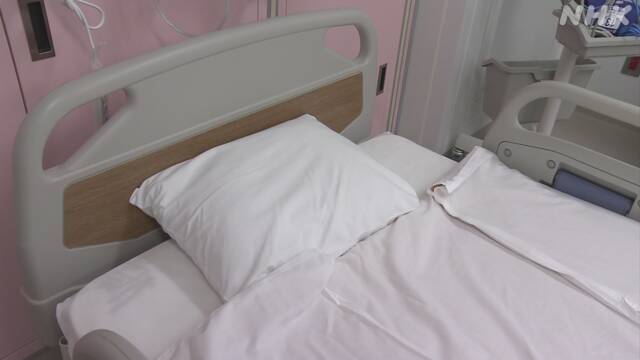As of the 13th of this month, the index showing the level of medical tightness in prefectures regarding the infection status of the new corona virus was 66% in Kyoto prefecture and 66% in Osaka prefecture. In addition to 53% and 71% in Nara prefecture, the "use rate of secured beds" is Aomori prefecture, Gunma prefecture, Saitama prefecture, Chiba prefecture, Tokyo metropolitan area, Kanagawa prefecture, Ishikawa prefecture, Yamanashi prefecture, Gifu prefecture, Aichi prefecture. 50% or more in each prefecture, Mie prefecture, Shiga prefecture, Kyoto prefecture, Osaka prefecture, Hyogo prefecture, Nara prefecture, Wakayama prefecture, Okayama prefecture, Hiroshima prefecture, Fukuoka prefecture, Kumamoto prefecture, Kagoshima prefecture, Okinawa prefecture, each of which is a subdivision of the government. It exceeds the standard of "level to strengthen measures" indicated by the association.
The government's "Coronavirus Infectious Disease Control Subcommittee" summarizes the idea of taking measures with an emphasis on the degree of medical strain.
The degree of medical care is different in each prefecture, so the level is decided by the prefecture.
In response to this, the Cabinet Secretariat has shown two indicators for determining the level of the prefecture, "load on the medical care provision system" and "infection status", of which "medical care provision system, etc." There are five items in "Load", such as "Usage rate of secured beds" and "Usage rate of severely secured beds".
The Cabinet Secretariat has released data for all 47 prefectures nationwide as of the 13th of this month.
Of these, the "usage rate of beds with severe illness" was
▽ Kyoto prefecture 66%,
▽ Osaka prefecture 53%,
▽ Nara prefecture 71%.
"Usage rate of secured beds" is
▽ 50% in Aomori prefecture,
▽ 63% in Gunma prefecture,
▽ 58% in Saitama prefecture,
▽ 66% in Chiba prefecture,
▽ 59% in Tokyo,
▽ 70% in Kanagawa prefecture. ,
▽ Ishikawa prefecture 65%,
▽ Yamanashi prefecture 65%,
▽ Gifu prefecture 59%,
▽ Aomori prefecture 66%,
▽ Mie prefecture 51%,
▽ Shiga prefecture 71%,
▽ Kyoto prefecture 67%,
▽ Osaka prefecture * 105%,
▽ Hyogo prefecture 76%,
▽ Nara prefecture 77%,
▽ Wakayama prefecture 63%,
▽ Okayama prefecture 57%,
▽ Hiroshima prefecture 55%,
▽ Fukuoka prefecture has 84%,
▽ Kumamoto prefecture has 63%,
▽ Kagoshima prefecture has 52%, and
▽ Okinawa prefecture has 52%
. It is above the standard.
* In Osaka prefecture, the number corresponding to the denominator is as of February 2, and it has not been updated to the latest number, so it exceeds 100%.
*
In addition, "load on medical care provision system" includes "hospitalization rate" and its "compared to last week", and "change in the number of severely ill persons" compared to last week.
In addition, "infection status" includes "positive rate of PCR test", "number of new positives" per 100,000 people, "number of new positives" "compared to last week" and "compared to last week", and "infection". There are five items, "Percentage of people whose route is unknown".
The data for each prefecture is introduced in detail on the NHK special website.
Have a look at this.
https://www3.nhk.or.jp/news/special/coronavirus/level/

